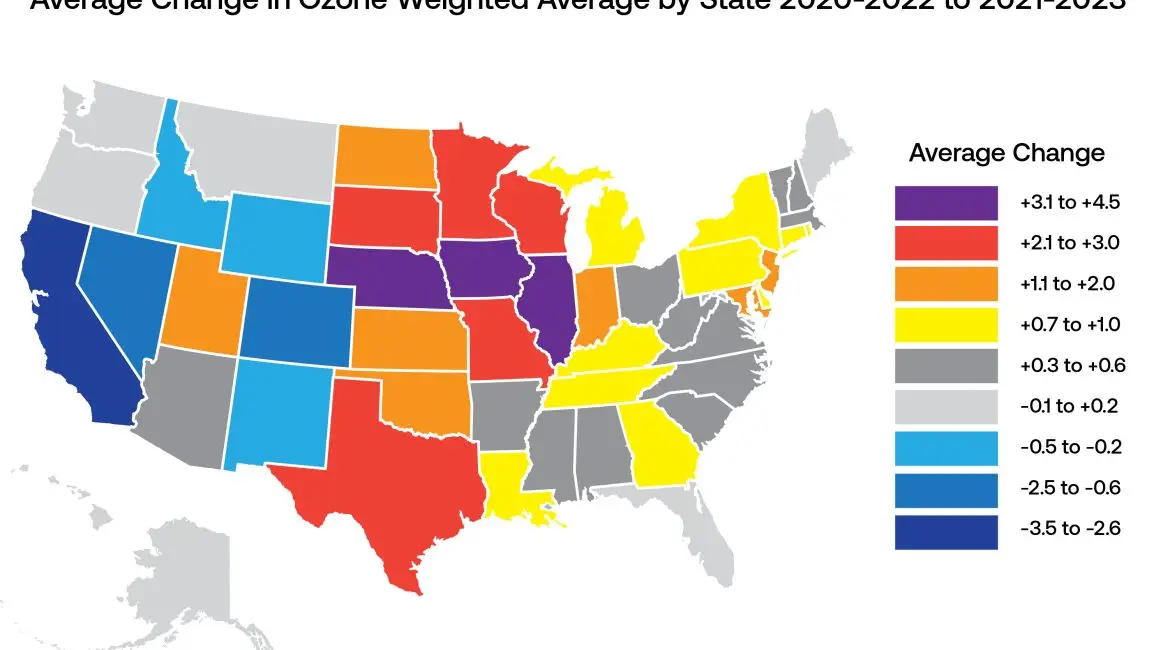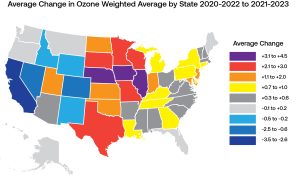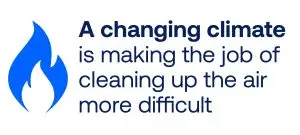The American Lung Association released its 2025 “State of the Air” report, which reveals that the New York metro area was named among the most polluted in the nation and was the most polluted area in the Mid-Atlantic/Northeast region for ozone pollution. Fairfield County in Connecticut remains the worst county for ozone in the metro area. At the same time, Queens County experienced more than double the amount of unhealthy short-term particle pollution, causing its grade to drop from a C to an F. Nationally, the report found that 156 million people (46%) live in areas with unhealthy levels of air pollution.
State of the Air
The Lung Association’s 26th annual “State of the Air” report grades exposure to unhealthy levels of ground-level ozone air pollution (also known as smog), and year-round and short-term spikes in particle pollution (also known as soot) over three years. The report examines the latest quality-assured air quality data from 2021 to 2023.
“The air pollutants covered in this report are widespread and can impact anyone’s health. Both ozone and particle pollution can cause premature death and other serious health effects, such as asthma attacks, heart attacks, and strokes, preterm births, and impaired cognitive functioning later in life. Particle pollution can also cause lung cancer,” said Michael Seilback for the American Lung Association. “Unfortunately, too many people in the New York metro area are living with unhealthy levels of ozone and particle pollution. This air pollution is causing kids to have asthma attacks, making people who work outdoors sick and unable to work, and leading to low birth weight in babies. We urge New York City and State policymakers to take action to improve our air quality, including passing the Hazardous Air Quality Emergency Preparedness Bill and NYHEAT bills, ensuring that New York move forward with implementing Clean Cars and Clean Trucks regulations, and electrifying New York’s school bus fleet; additionally, we are calling on everyone to support the incredibly important work of the U.S. Environmental Protection Agency (EPA).”
Ground-level Ozone Pollution in the New York-Newark, NY-NJ-CT-PA metro area:
The “State of the Air” report examined levels of ozone, commonly referred to as “smog,” the air pollutant affecting the largest number of people in the United States. The New York-Newark, NY-NJ-CT-PA metro area ranked 16th worst in the nation, and #1 worst in the Mid-Atlantic/Northeast region for ozone pollution. The ranking was based on the area’s worst county’s average number of unhealthy days—20.2 days per year, an F grade, in Fairfield County, Connecticut. Last year’s report recorded 17.7 unhealthy days per year, also an F grade.
Particle Pollution in the New York-Newark, NY-NJ-CT-PA metro area:
The report also tracked short-term spikes in particle pollution, which can be extremely dangerous and even deadly. The New York-Newark, NY-NJ-CT-PA metro area ranked 58th worst in the nation for short-term particle pollution. The ranking was based on the area’s worst county’s average number of unhealthy days—3.3 days per year, an F grade, in Queens County, New York. This was worse than the area’s ranking in last year’s report, which placed it as the 64th worst, with 1.3 days per year, earning a C grade.
For the year-round average level of particle pollution, the area’s worst county, Union County, New Jersey, received a failing grade for pollution levels above the federal standard. The New York-Newark, NY-NJ-CT-PA metro area ranked 48th worst in the nation. This was worse than the area’s ranking in last year’s report, which placed it as the 73rd worst in the nation.
In addition to the New York-Newark, NY-NJ-CT-PA, NY metro area, other notable findings across New York include:
- Albany County’s grades for ozone declined from an A to a B, and its C for daily particles worsened to a D representing its worst value ever.
- The Buffalo metro area experienced worsened year-round particle pollution, placing it as the 3rd most polluted in the Northeast
- All air pollution measures worsened for the Rochester metro area, requiring its removal from the “cleanest” lists for both ozone and particle pollution.
The “State of the Air” report found that 156 million people in the U.S. (46%) live in an area that received a failing grade for at least one measure of air pollution, and 42.5 million people live in areas with failing grades for all three measures. The report also found that a person of color in the U.S. is more than twice as likely as a white individual to live in a community with a failing grade on all three pollution measures. Notably, Hispanic individuals are nearly three times as likely as white individuals to live in a community with three failing grades.
Last Year’s State of the Air Report
In this year’s “State of the Air” report, the Lung Association is calling on everyone to support the EPA. EPA is essential to protecting people’s health from ozone and particle pollution. Without EPA staff and programs, families won’t know what’s in the air they are breathing, and efforts to clean up air pollution will be undone. Join the American Lung Association in advocating to protect EPA’s expert staff and lifesaving programs. See the full report results and take action Lung.org/sota.
Get involved and help the mission of the American Lung Association. The LUNG FORCE Walks in New York City and the Hudson Valley are scheduled for May 17th and June 14th. Register for a walk near you today at Lungforce.org



